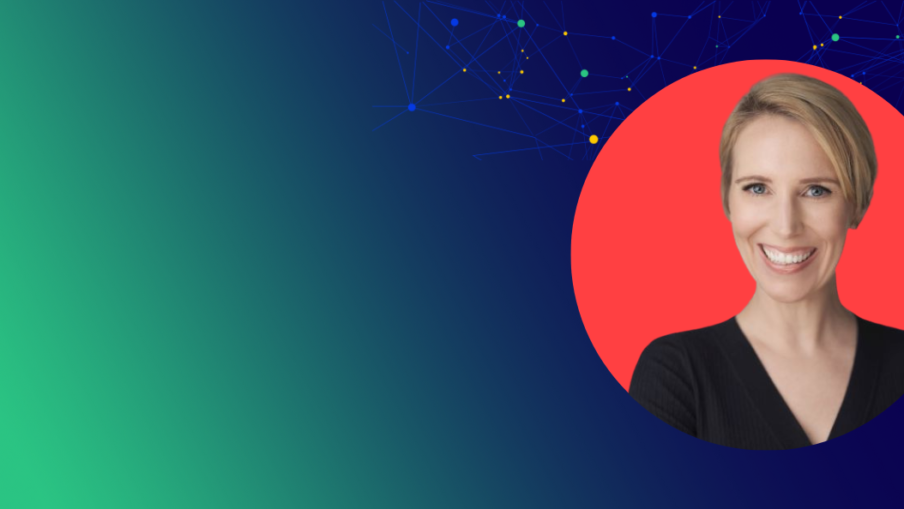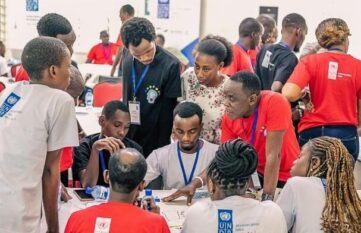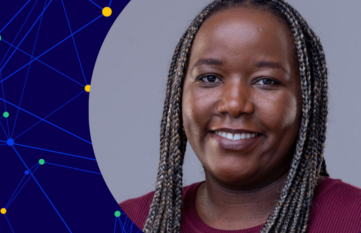Data feminism can change the world, says Kristy Kade of White Ribbon Alliance. A conversation with the CEO about new approaches to development work, disdain behind closed doors and lip service.
What is data feminism?
Kristy Kade: To me, it is a way about thinking and approaching data and data science from how it is gathered to how it is interpreted. What it really boils down to: Healthy, necessary questioning of data, of the system that produced it. Data is in the eye of the beholder! Yet it drips with power while getting the privilege of claiming objectivity. To me, data feminism is recognizing and challenging that; using data, seeing its value, and also its limitations.
Why does it matter?
Then you really make the best decisions. We all know how data can be spliced and diced, presented and interpreted to drive a certain narrative, usually the narrative of the status quo. Apart of this is, whom we require evidence from and why, and the changing threshold of when evidence is enough evidence to act. For example, you always hear from the big donors in this regard: Well, there is not enough evidence to invest in the grassroots and in local communities for accountability efforts. But they pour hundreds and hundreds of millions of dollars into UN accountability systems. They continue to do that without demanding evidence or expectation that these things are really driving change. People in this sector are not only interested in making changes but they also want to preserve their own belief systems and their own positions while they do it—its human nature. And data feminism is again about challenging that, acknowledging there is no true objectivity.
Could you please describe this narrative that has to be challenged?
The narrative to me is: We are experts who are extremely well-educated, extremely well-placed and we know best. And everyday people don’t know, can’t know and need to be helped and need to be saved. What we perceive and understand is more important than what they feel and value.
What does data feminism look like in different fields?
It’s about valuing lived experience as much as it’s about valuing a randomized, clinical controlled trial. What Women Want – this is the foundation of our work, it is data feminism. It started in India. Grassroots organizers have been doing data feminism from the beginning. They don’t get the acknowledgement and the credit that they deserve. What Women Want was this simple but radical idea: Ask the people what they most need and then give it to them. It shouldn’t be radical, but it was. We asked a million women and girls around the world an open-ended question. This is so rare within the larger field of data and research because we didn’t know what we were going to get. We weren’t looking for anything particular. We weren’t looking to have our existing ideas validated. We let women set the agenda. And the other thing we did that was unique is: We focused on what we call the democratization of data. We put every woman’s words, her demands, out there on a publicly available dashboard, people can do their own analysis and not take our word, with our biases, for it.
So, you got all these answers. What can be done with them?
What do you think the number one thing was that women and girls asked for, for their reproductive and maternal health?
Free access? Education?
It was respect and dignity. It was all about how they are treated by health personal and providers. And the number two answer was water sanitation and hygiene. Their answers were taken directly to the decisionmakers in the eight countries that we did this in. The message was: This is what women really need from their own perspectives. At first, we got so much pushback from technocrats and UN and donor representatives, many dismissed and ignored what women said. But not local decisionmakers. They were thankful for this information because there is so much data, so much evidence, so many special interests, often even saying conflicting things. Hearing the women’s voices helped them make choices. And they responded to it. So, in this campaign within three years more than 40 policy changes were made in eight countries. More than 330 million dollars of domestic funding was mobilized. More than 40.000 health facilities were upgraded all in accordance with what women and girls very specifically said.
Could you please give an example for that?
Women and girls weren’t asking for anything that wasn’t unscientific per se. You know, it’s actually basic common sense, basic decency, basic infrastructure, like: “I’m not going to go to a health center to give birth when I can’t even wash the blood off myself. Yes, I want water. And if you maybe put water in that health facility, I will go there and I will then actually pay attention to the specific interventions you’re so interested in pushing.” In Niger State, Niger public health funds were used for the first time to support structural improvements and WASH upgrades in 39 primary health care facilities. Officials installed running water and handwashing stations, drums for waste disposal, and clean toilets benefiting nearly half a million people.
Do you think that this approach can change the work on health and development?
There’s a lot of disdain for ordinary people’s perspectives and viewpoints, even though there’s a lot more lip service about it today. But there’s disdain behind closed doors. Yet if we listened to everyday people and integrated their perspectives and ideas, our work would be more impactful. We would take a larger systems approach. Women and communities do not want us to silo. But again, the development sector is super laser focused on clinical interventions, you know, trying to plug one hole in the wall. And we’re doing that again because that is what the experts are interested in and the data they choose to point to confirms it. But women can see, feel, touch the challenges and the barriers – they don’t need a peer reviewed article to confirm what they are daily living with and experiencing and/or what they want out of life. We have to respect that and to listen to that. Data feminism can transform this world.
Feminist Development Policy is the BMZ’s new priority, as well as of other European governments, and shall be mainstreamed throughout all projects. From your perspective, how can development cooperation systematically apply a data feminist approach in digital transformation projects?
There is exciting potential there and there is a cautionary tale as well. One thing we always have to be careful about is the fetishizing of not only data, but digital solutions too. We often worship at the altar of technology and innovation and digital tools. I think there’s often this search for these several silver bullet solutions, in large part because we don’t want to have to change the status quo or our behaviors. It’s really important to recognize that technology alone isn’t going to move us forward. We need to always couple it with meaningful human engagement. Otherwise, it can do untold harm. And what I’ve often seen is: People want to use digital to skip over people!
You use digital in your organization…
Yeah, and we are proud about our achievements! The work we’re doing with GIZ is making use of a chatbot but as a tool that works best in the hands of people – specifically community mobilizers – and is not a replacement or substitution for them. This digital technology can now provide real time analysis of women and girls and gender diverse people’s open-ended answers and lessen the time between someone making a demand and seeing a decision maker respond in kind. It’s one of the only natural language understanding models in the world being developed by using the voices of over a million women and girls. And so that really improves its accuracy rate because it’s truly listening to who is speaking. And not a lot of technology does that. We are feminizing artificial intelligence! That’s really critical and that’s important. But at the same time, we can’t forget it’s real people who really drive real results. It’s people that can foster trust. It’s people that spark inspiration. It’s people that create a shared sense of purpose. Digital technology will never do that. Community based organizations are, in fact the better buy. But we don’t want to invest in them. We would rather invest in our gadgets. And, you know, the US has the highest maternal mortality rate among high-income countries, and in the city I live in, Washington DC, Black women experience higher rates of maternal deaths than in Syria. We have all the technology and all innovation we really could possibly want, but we are not seeing, hearing, listening to, respecting Black women.
But we are not investing in the people?
No, and when we do, is when we have breakthroughs. A really interesting example of the importance of data feminismand investing in people who are seeing and listening to communities, investing in people that apply a more intersectional lens and look at data differently is Mamatoto Village, in my hometown of DC. Taking a wider view, they saw the number one contributor to maternal mortality in the district was housing insecurity. Not surprising as housing or higher quality housing came up frequently among their clients seeking perinatal services. Now housing and health advocates are coming together to speak about and solve with communities the harm poor quality housing poses for pregnant people, babies, and their families.
How can we reconcile the top-down approach of development cooperation with the bottom-up approach of data feminism?
I am a person who really believes that wisdom and experience can and should come from everywhere. That exchange is extremely powerful. Bringing people together with different viewpoints is important. People have different forms of knowledge. And when you bring different forms of knowledge together, that’s when you come up with the most powerful solutions. It’s moving away from the idea that one form of knowledge is superior, that one paradigm, even if currently the leading paradigm, is the right paradigm.
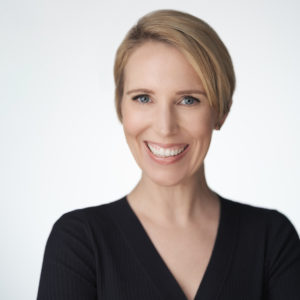
Wisdom and experience can and should come from everywhere. That exchange is extremely powerful. Bringing people together with different viewpoints is important. People have different forms of knowledge. And when you bring different forms of knowledge together, that’s when you come up with the most powerful solutions.
Kristy Kade, CEO of White Ribbon Alliance
In order to have a paradigm, you need Research and Development…
…sure, a lot of has been invested in R&D. I think R&D is important but too much is developed in ivory towers and in labs. R&D investment should go on, but not at the expense of, actually once again, investing in communities and grassroots organizations. Our investment choices, including investment in R&D, are grounded in our value systems, as much as they are grounded in data. I value investing in communities more so than investing in innovation—even though I may have less of a place in this work with a focus on direct investment in communities. Many other people also value this investment in communities over innovation, but they don’t say it out loud because they still value their own funding and their own jobs more. They want to do good. I like to think everyone’s well intentioned, but they can’t remove their own role and in their own place in the ecosystem from examining the drivers of change.
Do you see any potential risks when you try to apply all these approaches, these ideas into a project, or is it also theoretically a win-win situation?
We as White Ribbon Alliance have completely changed how we do business and now fully embrace and speak the principles of data feminism. Why? We’ve had more impact in the last three years via this approach. We’ve had more return on investment. We’ve had a happier, more trust-based culture. We’ve had more meaningful partnerships with wind-ranging organizations and individuals. Words matter, but we all come from different places and different perspectives and we use different words to describe things. It’s about really aligning on values and beliefs, even more than exact language, to make change. And doing no harm by making sure your principles are foundationally strong.
And what are the safeguards to do no harm?
One of the biggest things and safeguards to do no harm is commitment to action and feedback. And one of the most dangerous things you can do is to go to people, to go to a community, to listen, to apply this lens, to ask intersectional questions, and then do what you were going to do anyways. Research and data are so often extractive. People go, they ask questions and they’re never heard from and seen again. You know, when we did What Women Want, people said: “People come here all the time. They ask questions and nothing changes.” Data should only be collected from a community if it will be used in part to directly benefit that community. There’s a sense in the larger data world that data has to be gathered and applied at these huge scales to be a value, but the most powerful, revealing data is often that which is captured by and applied within a community. To do no harm it is important to have a social work perspective as well as a research perspective. Lots of times when people are doing data collection, they’re focusing on their lists, their numbers, their objectives and not the person in front of them.
What can happen then?
They’re often asking about sensitive topics without any real idea of how to do that in a compassionate way, nor are they prepared to handle the consequences of certain answers. An example: a few years ago, in Kenya, a project was asking people with disabilities about their healthcare experiences . And then they uncovered that someone had been sexually assaulted the week before and they had no idea what to do or how to respond to that; both from the perspective of how do I take this forward as a violation and address what just happened in this clinic somewhere. And how do I actually respond to this person who just revealed this to me? So many people who are survivors are just waiting for someone to ask them, to be able to give voice to what happened, but if/when they do and the person they are talking to doesn’t respond well, the survivor is retraumatized. We do not prepare researchers, surveyors, people collecting data to actually be able to handle that. And so I think that’s a really important part of the training that needs to be done to ensure no harm.
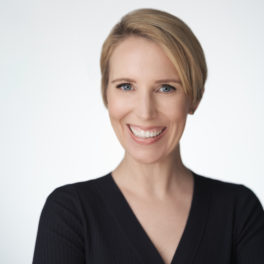
Kristy Kade
CEO, White Ribbon Alliance
Kristy Kade is the CEO of White Ribbon Alliance. She previously served as the Deputy Executive Director and Director of Advocacy and Programs. She is also the co-chair of the global campaign What Women Want: Demands for Quality Healthcare from Women and Girls. Prior to joining WRA, Kristy served as the Director of Policy and Advocacy at PATH and Associate Director of Advocacy and Public Policy at Pathfinder International. Kristy received her MPH in international health from Boston University School of Public Health and her BA in sociology/anthropology and women’s studies from Ohio Wesleyan University.
The interview has been conducted by Jan Rübel of Zeitenspiegel Reportagen.
